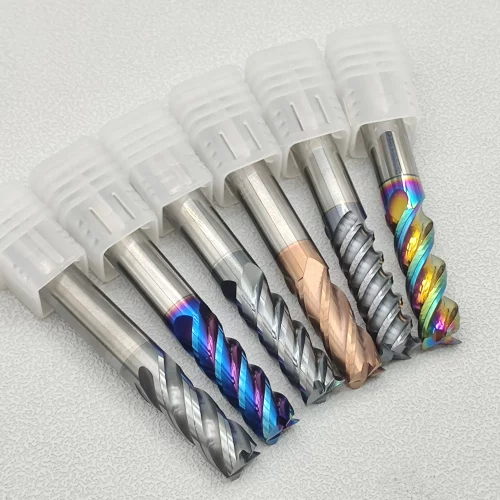Choosing the right end mills for aluminum is crucial in ensuring high-quality machining results. Whether you are a professional machinist or a enthusiast, selecting the appropriate tools for your aluminum projects can make a significant difference in the final outcome. In this article, we will discuss some essential factors to consider when choosing end mills for aluminum.
One of the key aspects to consider is the material of the end mill. Aluminum is a soft material compared to steel or iron, so using end mills specifically designed for aluminum can optimize the cutting process. These end mills are often made from carbide or high-speed steel, both of which offer excellent hardness and durability. For instance, carbide end mills have a higher resistance to wear and are able to maintain sharp cutting edges for a longer time, resulting in improved machining performance and extended tool life. On the other hand, high-speed steel end mills are more budget-friendly and can still deliver reliable results for less demanding aluminum projects.
Another crucial factor to take into account is the flute design of the end mill. Flutes refer to the grooves on the cutting surface of the tool, and they play a critical role in chip evacuation and heat dissipation during machining. When it comes to aluminum, it is recommended to choose end mills with a high flute count, such as 3 or 4 flutes. The increased number of flutes helps in reducing chip load and generates smaller chips, minimizing the chances of chip recutting and improving surface finish. Additionally, the design of the flutes should incorporate a high helix angle, as this promotes efficient chip evacuation and reduces the risk of chip clogging or workpiece damage.
One important benefit that customers prioritize when purchasing end mills for aluminum is the ability to achieve smooth and precise cutting results. The right tool geometry plays a vital role in this aspect. End mills with a sharp cutting edge and a small corner radius can provide excellent performance when machining aluminum. The sharp cutting edge ensures a clean cutting action, while the small corner radius helps to reduce the likelihood of chip clinging or workpiece deflection. Moreover, the selection of a suitable coating for the end mill can enhance its performance and prolong tool life. Coatings like TiAlN or TiN have high adhesion and heat resistance properties, minimizing friction and extending the tool’s durability.
When considering the application areas for end mills in aluminum machining, customers often focus on specific projects or industries. For instance, aerospace manufacturers may require end mills capable of machining complex aircraft components with tight tolerances. In contrast, automotive professionals might prioritize end mills that offer high material removal rates for the mass production of aluminum car parts. By understanding the unique requirements of each application, customers can make informed decisions about the type of end mills they need.
In conclusion, choosing the right end mills for aluminum involves considering various factors, such as the material of the tool, the flute design, the tool geometry, and the application areas. By selecting carbide or high-speed steel end mills with the appropriate flute count, helix angle, and cutting edge geometry, users can achieve smooth and precise cutting results. Additionally, the application-specific requirements in different industries should be taken into consideration to ensure the desired outcome.
